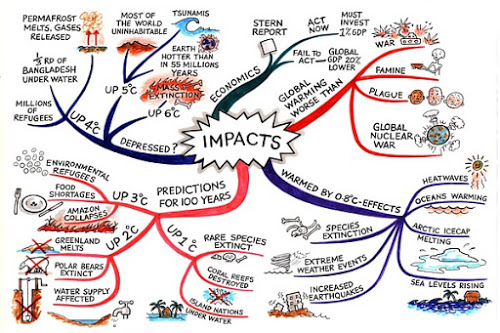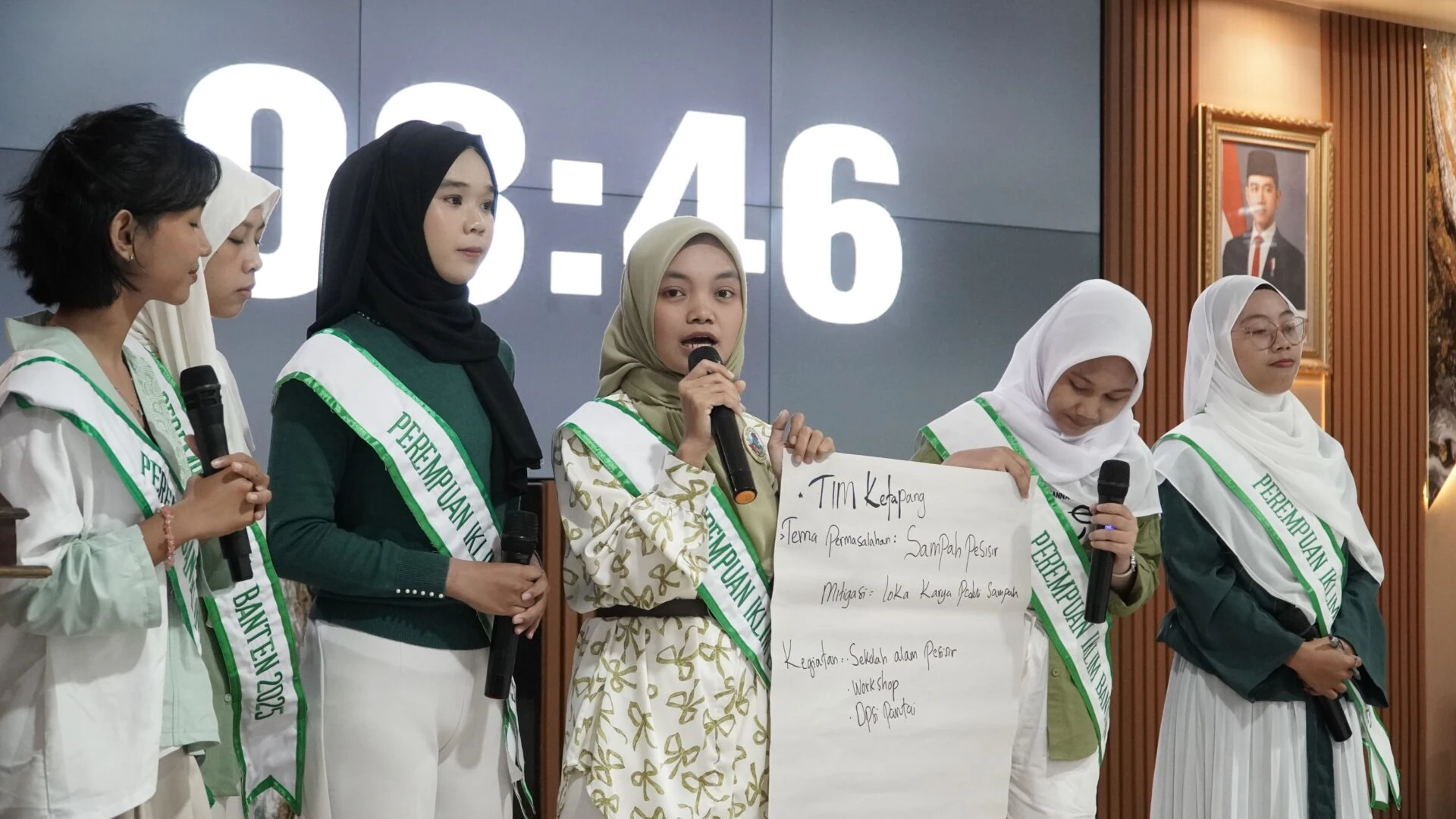By Rokhmad Munawir*
 Climate change is a phenomenon of nature that occurred significantly towards the weather patterns that occur in a specific time period. There is a general understanding that climate change is a drastic change in temperature, rainfall and the season and wind patterns.
Climate change is a phenomenon of nature that occurred significantly towards the weather patterns that occur in a specific time period. There is a general understanding that climate change is a drastic change in temperature, rainfall and the season and wind patterns.
The change does not just occur naturally. There are several contributing factors, among others: human activities such as deforestation, use of machinery that produce high carbon emissions, natural phenomena such as volcanic eruptions and the phenomenon of El Niño and La Nina in the oceans, solar radiation, as well as pressure tectonics of the earth, and biological processes.
The process of climate change, slowly but surely has a serious and alarming impact for the inhabitants of the earth because it threatens human life. Outbreaks of disease, occurrence of droughts, floods, landslides and other disasters, and changing atmospheric conditions are impacts of climate change.
In human life, the sectors most affected by climate change are agriculture and health. In the agricultural sector, production will decline, resulting in food shortages and rising food prices in the market. Meanwhile, in the health sector, there is an increasing risk of endemic diseases such as dengue fever, diarrhea and malaria. These are threats to human life.
Many regions in Indonesia are vulnerable to climate change. The mountainous topography, the surrounding volcanoes and vast oceans cause a fairly high risk. One area that has a high vulnerability is the province of East Java. The regencies/cities in East Java have a high degree of vulnerability due to climate change, rainfall, as well as volcanic and tectonic activities. Data from the Regional Disaster Management Agency (BPBD) of East Java province mentioned that there are 22 regencies/cities in East Java that are vulnerable to disasters caused by climate change, especially landslides, droughts and floods.
The region most affected by climate change in Indonesia is the Greater Malang region, which includes Malang City, Malang Regency and Batu City. According to data released by the Ministry of Environment and Forestry (KLHK) on the Risk and Adaptation to Climate Change Assessment (KRAPI) in 2012, the Greater Malang region has a monsoon climate (dry winters and wet summers). This situation was allegedly caused by a rise in temperature of 0.690 degrees C throughout the last 25 years. Additionally, on the other hand, the region also has an extreme rainfall, which on average will have increased by 5% in 2030 compared to current conditions.
Various stakeholders in the Greater Malang region are already aware of this situation. The local government has made environmental issues as a strategic issue and a concern in the local development. Various efforts have been made such as training communities to respond to disasters, strengthening and expanding disaster resilient villages, and mitigating risk reduction when disaster strikes. Adaptation to climate change is also made through efforts of reforestation of green belts along rivers and prevention of indiscriminate logging, both by the society and by companies, as well as making biopores on green open areas in urban areas.
These efforts will not succeed if done unilaterally by the regency and city governments, without involving other parties who have been development partners such as the civil society, the private sector and of course the villages. The paradigm that environmental affairs are the responsibility and authority of the regional government also needs to be changed. The authority and responsibility should be divided and given to the village government as well. On the other hand, the disaster management paradigm that still focuses on emergency response must also be changed so that it points to the management of risk reduction and climate change adaptation that combines technical and scientific standpoints.
It is time for local governments to distribute their authorities on disaster management and environmental issues to the village governments. The village has an authority guaranteed by the Village Law, namely village scale local authority, authority based on the right of origin, and authority assigned by the government and local governments. Environmental issues, climate change adaptation and disaster are part of the local authority at the village scale. This is because these matters are in accordance with the interests of the villagers and the village government is believed to be able to take care of them properly and effectively.
The paradigm of the government and local government that considers the village as being unable to implement the authority must be changed. It is a misleading mindset and perspective that will ultimately make the village as a mere object with no opportunity to be the subject.
It is the duty and obligation of regency/city governments to strengthen the capacity of the villages. One way the local government can do is helping the village through the Regional Disaster Management Agency (BPBD) in formulating policies and programs regarding the efforts of Adaptation to Climate Change (API) and Disaster Risk Reduction (DRR), as well as funding to run the program. Governments should not justify the inability of the village instead.
The authority related to the environment and climate change adaptation needs to be transferred to the village so that the public is more aware of the importance of protecting the environment and adjust environmental improvement efforts and adaptation to climate change to their needs. Villagers certainly have the experience and perspective on how to address climate change.
Changes in precipitation and the seasons in Malang have occurred in recent years. Villagers in the region have also proved able to survive by adapting to maintain their plants in order to keep their harvest levels. The models of efforts and adaptation need to be strengthened further with the technical and scientific viewpoints by the regency/city as well as the parties concentrating on this issue, such as universities, community organizations and the private sector.
The efforts made by the village community and the government only need to be strengthened academically. This is so that the villagers and the village administration are more capable of taking adaptation measures. On the other hand, the village government can begin adding some of the agenda and program of activities into rural development planning policies, both in the Medium Term Rural Development Plan Rural and the Village Government Work Plan (RKP Desa). Such activities include replanting on the banks of the rivers or the forests in the villages; providing insight to the public about organic and non-organic waste management, cooperating with universities in developing sustainable cropping patterns, and many more activities capable of directing the public in understanding and strengthening capacity in adapting to climate change.
Keep in mind that one of the factors affecting the vulnerability of communities to climate change is the sensitivity in adapting or responding to those changes in order to survive. This needs massive efforts of the parties to deal with this.




